Dettagli
Anno di pubblicazione
1919
Soggetto
Histoire|XXème siècle
Descrizione
- 1919 - 1920, 24x36cm, autre. - Russian Revolution photograph album. Agit-trains (Agitprop) 1919-1920 | 24 x 36 cm Album bringing together 23 photographs of agit-train activity, trains that exported Bolshevik Revolution propaganda to the countryside. 1950s Press Service print on the original negatives. Some of these photographs are very rare, the negatives having now disappeared. We see characters like the French Romer, who played a key role in the Russian Revolution, and Petrovski. These photographs were taken in Ukraine, whose political situation with Russia was complicated in the aftermath of the Russian Revolution. Modern accordion-type oblong binding. Back in black imitation leather paper, boards in red leather-look paper. The photographs are mounted on strong cardboard, the 23 cardboard leaves are joined by stitching in a Japanese-style album. The symbol used as a plaque on the upper board is one of the first symbols used by the first communist corporations in the 1920s, at the time of the photographs. The original boxes have curved. Each photograph has a hand-written caption in the lower margin, in blue ballpoint pen, in the Cyrillic alphabet, from the 1950s. 1/ Agit-train en route "October Revolution". 2/ Agit-train gathering in a station in Ukraine. 3/ Group of people near the theatre car. 4/ Loading newspapers on the train. 5/ Agit-train gathering in a station in Ukraine. 6/ Petrovski during the gathering of the "October Revolution" agit-train in the Cherkasy station. 7/ Group of people at the station, Luhansk station. 8/ Distributing newspapers in one of the stations. 9/ Luhansk residents near the "October Revolution" agit-train. 10/ Train employees loading wood for the train. 11/ Concert for the Red Army. 12/ (Crowd): Distributing newspapers on the "Budenny" platform. 13/ (Crowd): Meeting at Bakhmach, Chernihiv province during the passage of the agit-train. 14/ (Rails): Battle scene, 6 January 1918. 15/ (brick building): Station destroyed by the "white Poles" in Zhytomyr (Ukrainian town). 16/ (platform): Station Boro.ba, under the Germans. (There is one letter that does not form part of the current Russian alphabet) 17/ (Gathering): Meeting organised by the agit-train workers. 18/ (demonstrators): Demonstration of workers in the "Donbas" the day of the trails procession. 19/ (Speech): the commander of the 4th "Budenny" division delivers his speech. 20/ (bags): export of cereal to Germany. 21/ (wagon): group of supporters in the centre of "Pasternak". 22/ (Ship): Prisoners of war on the ferry. 23/ Group of women from the Red Army in Kharkiv. To support the October Revolution, the Bolsheviks had to move faster, reach out to as many people as possible in such a vast and illiterate country. At the beginning of the revolution, the All-Russian Central Executive Committee (VTslK) invented agit-trains or Agitprop trains (for Agitation-Propaganda) in order to shape and inform the population. These trains were decorated with large, illustrated posters to disseminate messages. They housed a club, newspapers, cinema hall, theatre and library, shop and speaker's platform mounted on wheels. [FRENCH VERSION FOLLOWS] Album réunissant 23 photographies sur l'activité des trains d'agitation, trains qui exportaient dans les campagnes la propagande de la Révolution bolchévique. Tirage Service de presse années 1950 sur les négatifs d'origines. Certaines de ces photographies sont très rares, les négatifs ayant aujourd'hui disparu. On y voit des personnages comme le français Romer qui a joué un rôle clef dans la Révolution Russe, ou Petrovski. Ces photographies ont été prises en Ukraine, dont la situation politique fut compliquée avec la Russie au lendemain de la Révolution Russe. Reliure oblongue de type accordéon moderne. Dos en papier imitation cuir noir, plats de papier façon cuir rouge. La reliure est fidèle tant pour les matériaux utilisés que la couleur aux albums de l'époque. Les photographies sont contrecollées sur carton
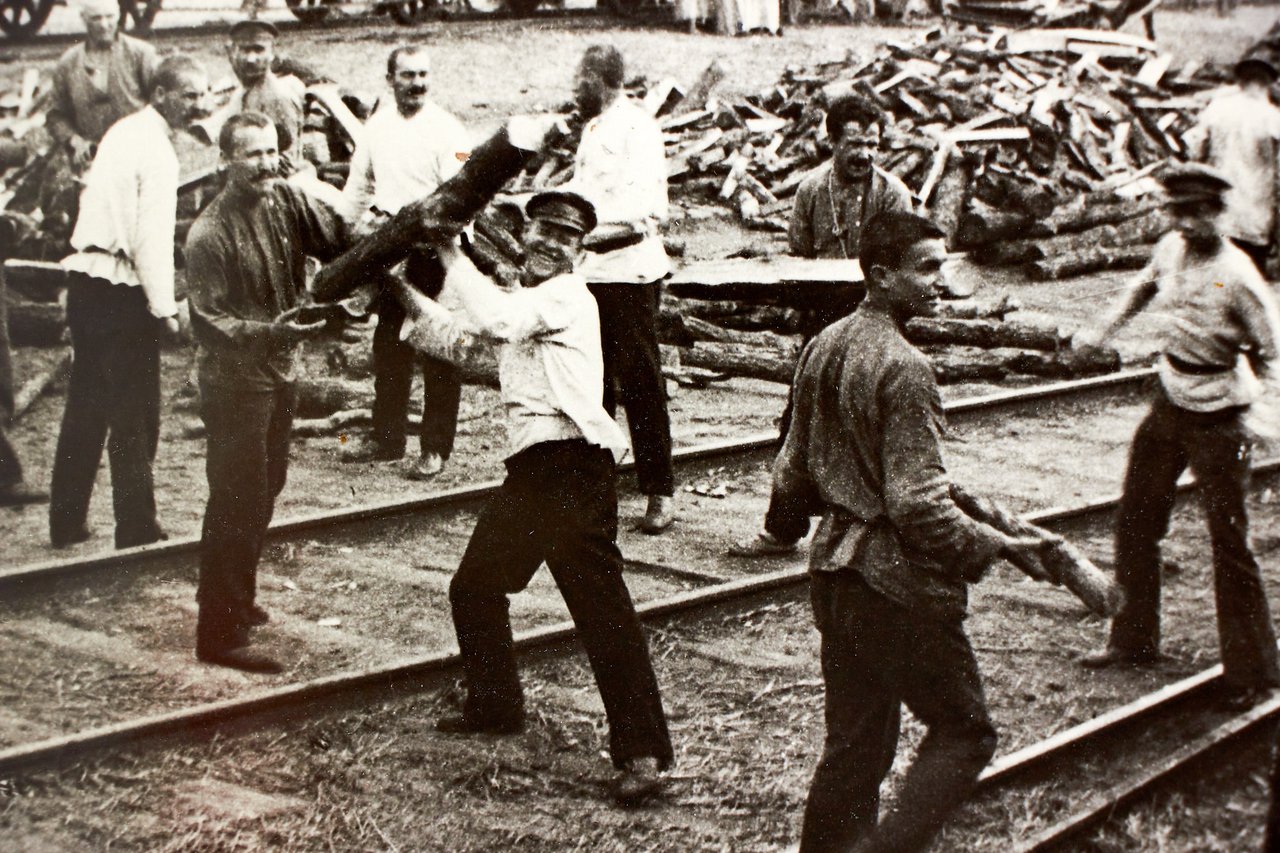
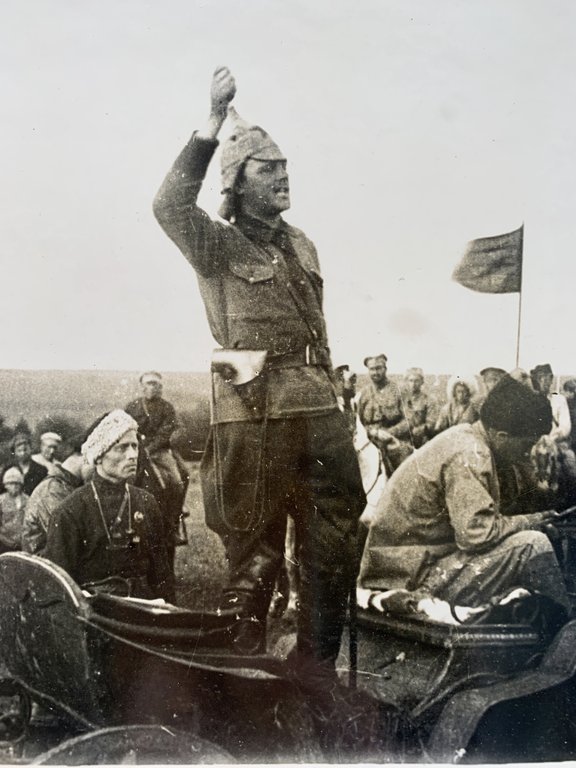
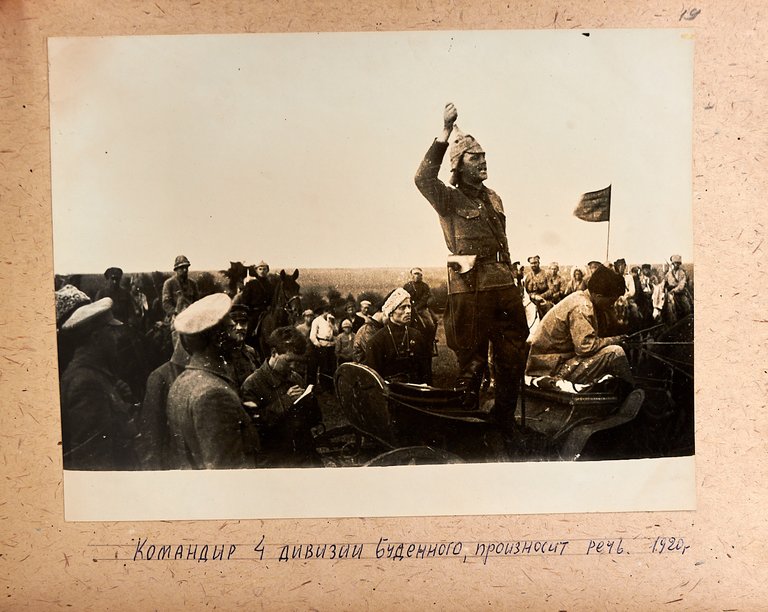

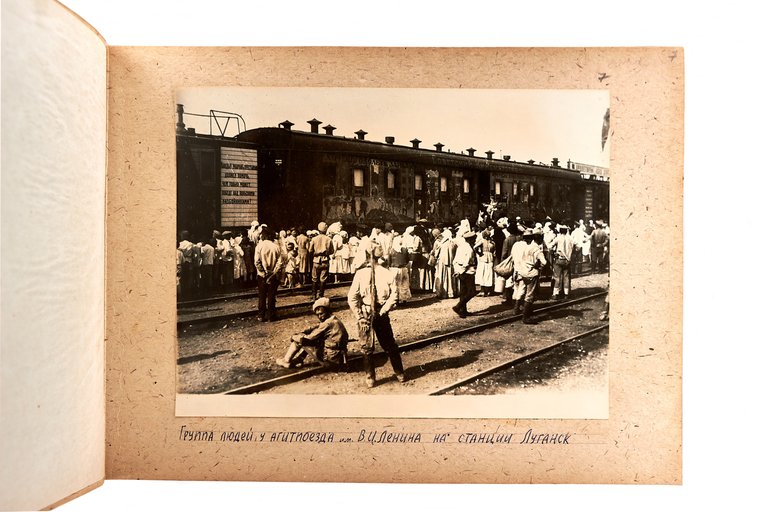

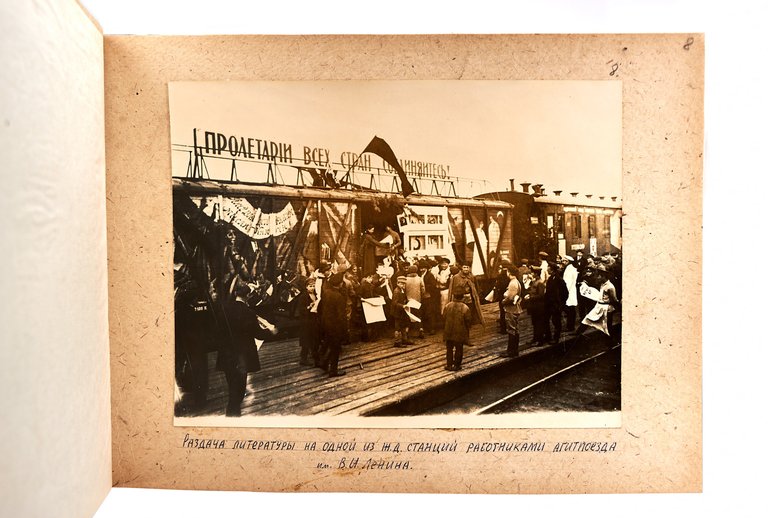


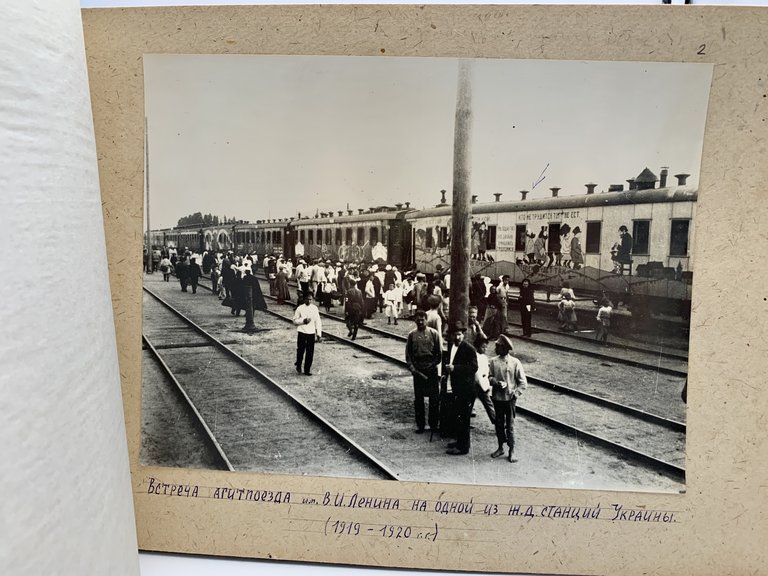
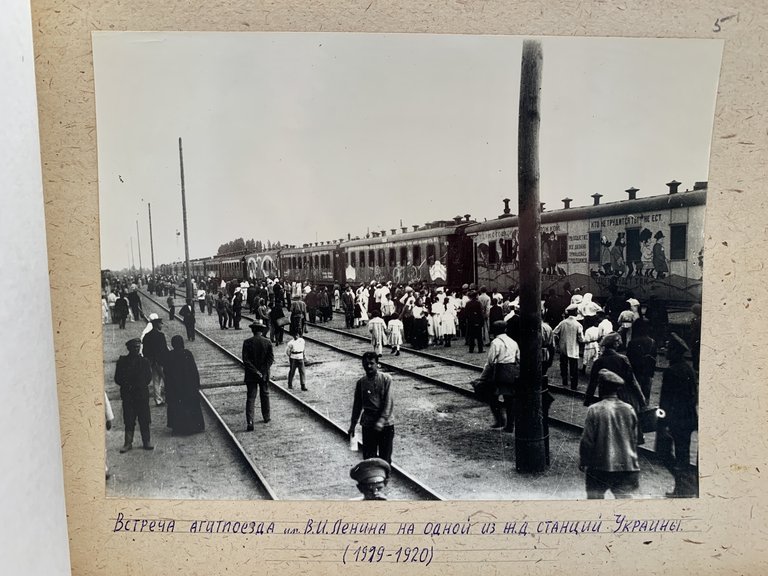


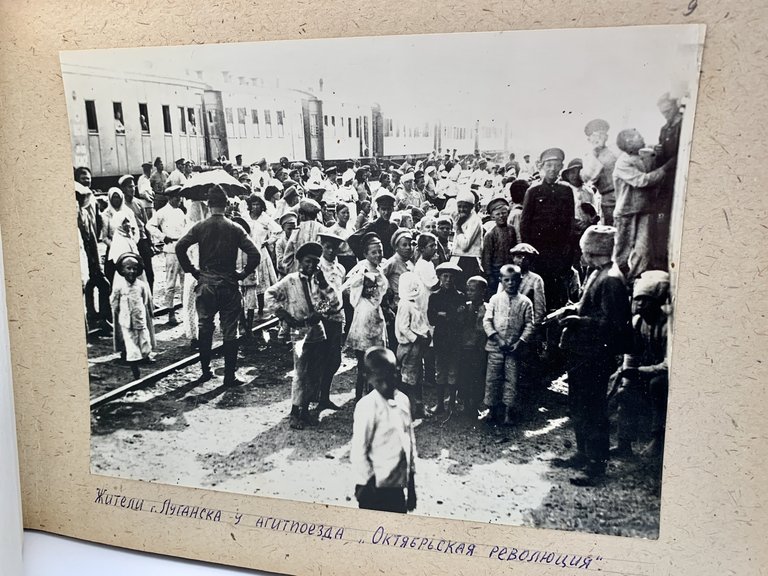
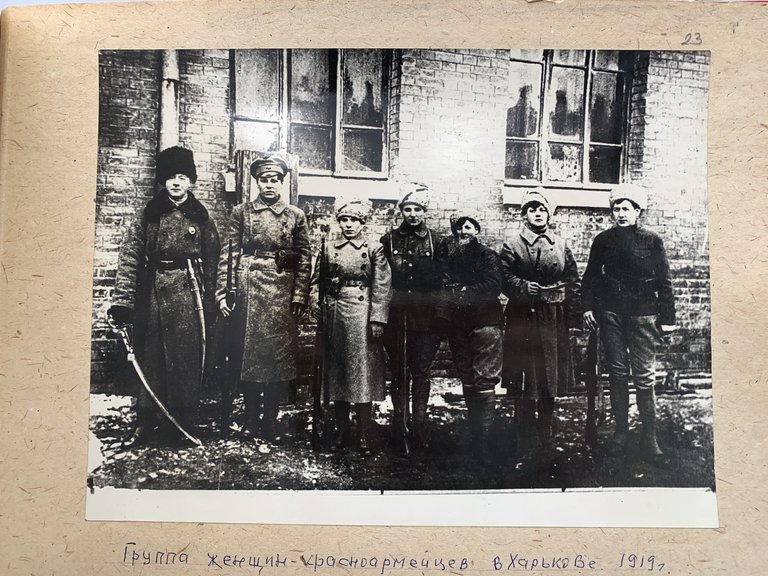

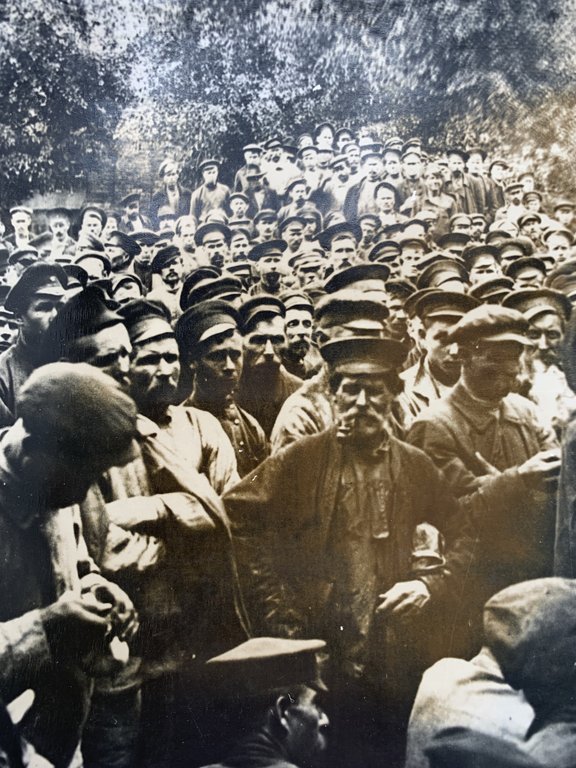

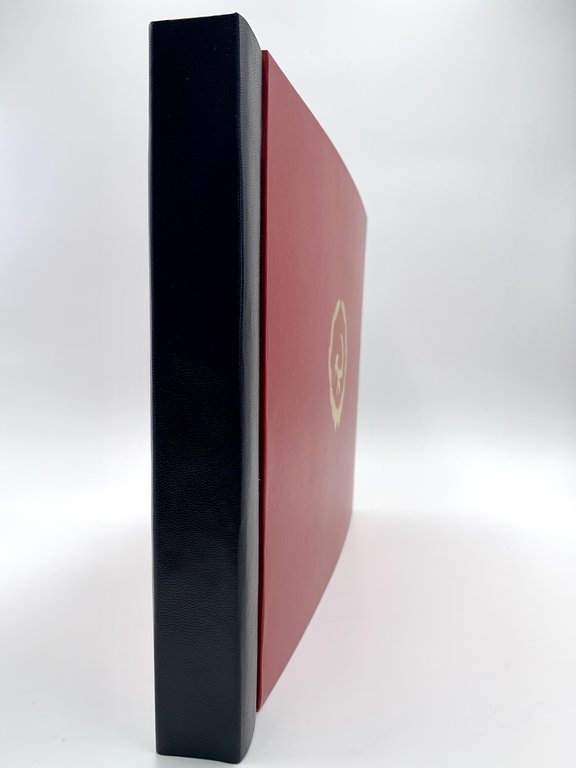
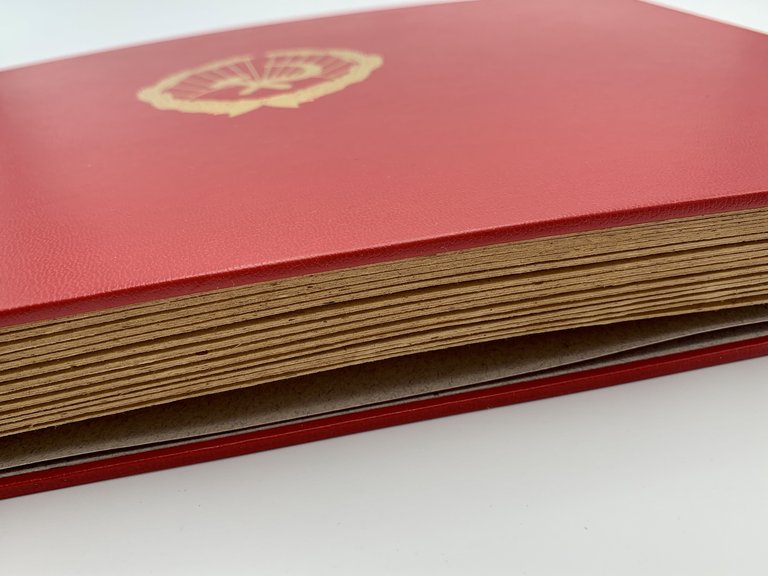



Scopri come utilizzare
Scopri come utilizzare

